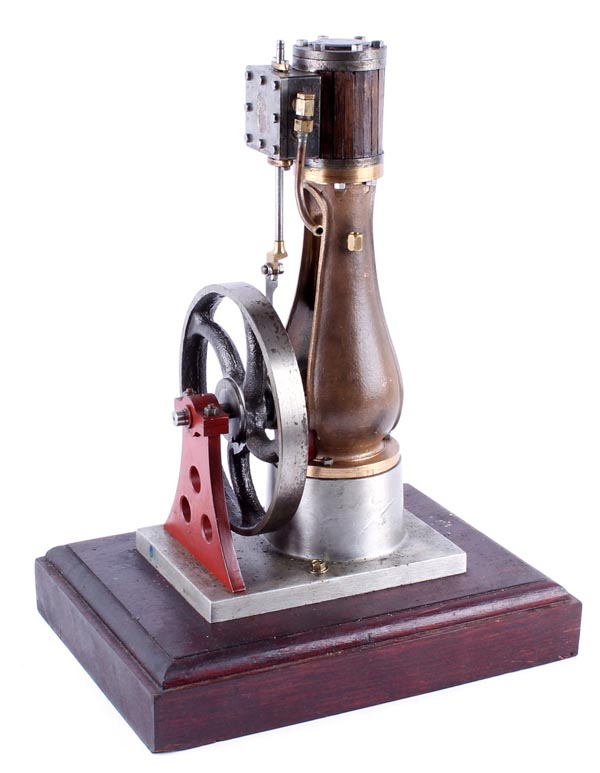Although it would be nice to make them like the originals there are some compromises that have to be made as the size comes down for example it may not be possible to pour babbitt through a gap that is 1/3rd or 1/4 of the original without it cooling & setting solid before it flows right through. You may have to opt to cast a solid cylinder and then machine that as you would a piece of bronze.
Slender parts were often done in ductile iron not grey on full size and it becomes even more important as the cross section comes down to use ductile so your castings don't break, quite a few kits that I have made use ductile iron for some or all of the parts, others opt for various bronzes and gun metal which will just bend, this also helps eliminate the problem of chill if the thin iron cools too quickly.
Also I'm not averse to some parts being cast in aluminium, having done a couple of the Root & Van Der Voort engines by Rocky's they are so much easier to pick up and handle. Lets face it once painted who knows what the metal is. This would also mean more people could home cast as there are no where near as many that can melt iron as there are non ferrous.
As mentioned above I quite like a bore around the 1" mark and have done about 12 engines now with a 24mm bore, some scaled down from larger old model designs which works out well. It opens up the number of people that can make the model as flywheels tend to fall into what can be one on teh generic 7x ?? MiniLathe, material costs are not too high, you get get a lot of them on a shelf and easily handled.
Those two last points would also suit the 3D files option more than patterns as self printed or cut patterns could have the correct shrinkage allowance added for whatever material they were being cast in and if someone wanted a smaller version could simply reduce the file size
Slender parts were often done in ductile iron not grey on full size and it becomes even more important as the cross section comes down to use ductile so your castings don't break, quite a few kits that I have made use ductile iron for some or all of the parts, others opt for various bronzes and gun metal which will just bend, this also helps eliminate the problem of chill if the thin iron cools too quickly.
Also I'm not averse to some parts being cast in aluminium, having done a couple of the Root & Van Der Voort engines by Rocky's they are so much easier to pick up and handle. Lets face it once painted who knows what the metal is. This would also mean more people could home cast as there are no where near as many that can melt iron as there are non ferrous.
As mentioned above I quite like a bore around the 1" mark and have done about 12 engines now with a 24mm bore, some scaled down from larger old model designs which works out well. It opens up the number of people that can make the model as flywheels tend to fall into what can be one on teh generic 7x ?? MiniLathe, material costs are not too high, you get get a lot of them on a shelf and easily handled.
Those two last points would also suit the 3D files option more than patterns as self printed or cut patterns could have the correct shrinkage allowance added for whatever material they were being cast in and if someone wanted a smaller version could simply reduce the file size



































